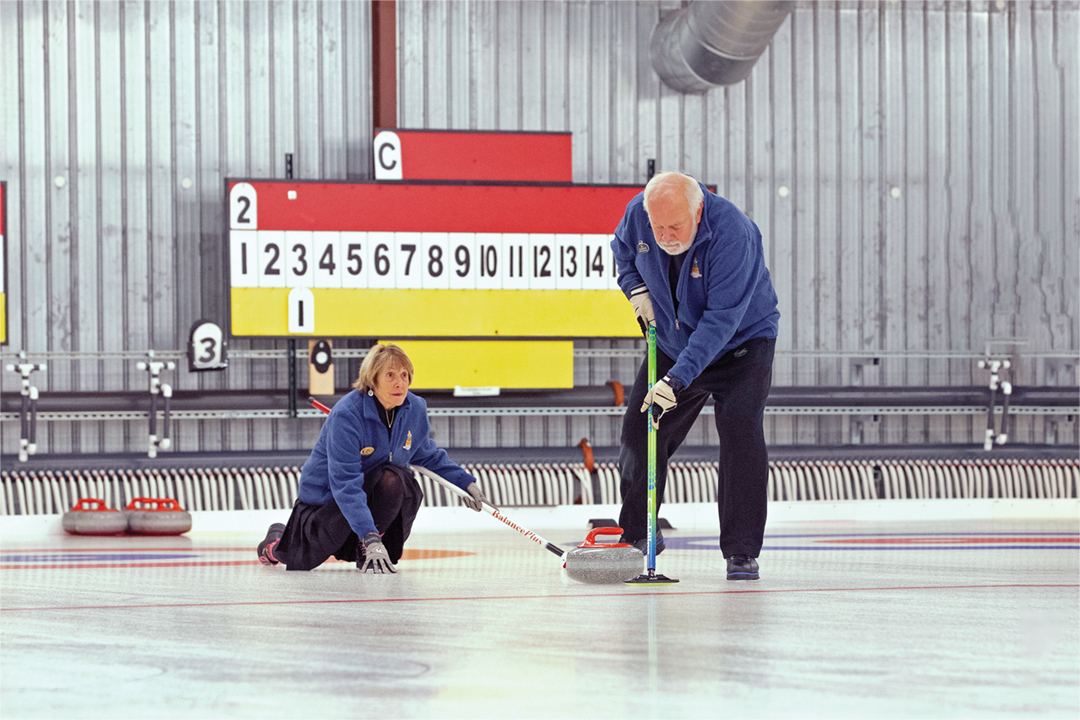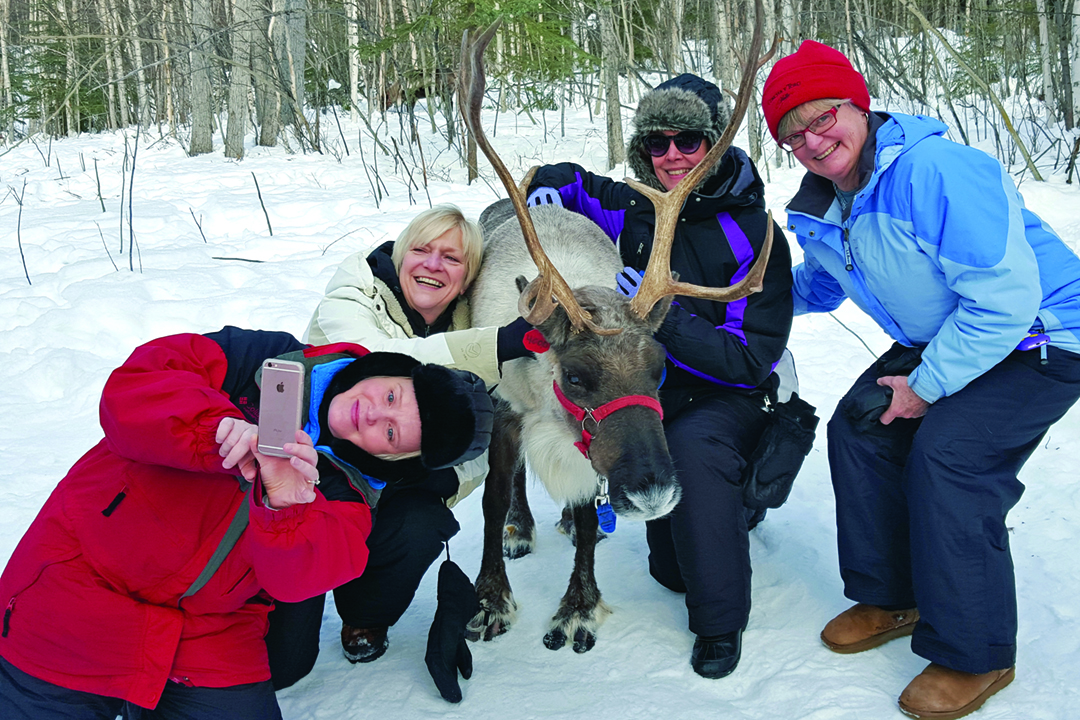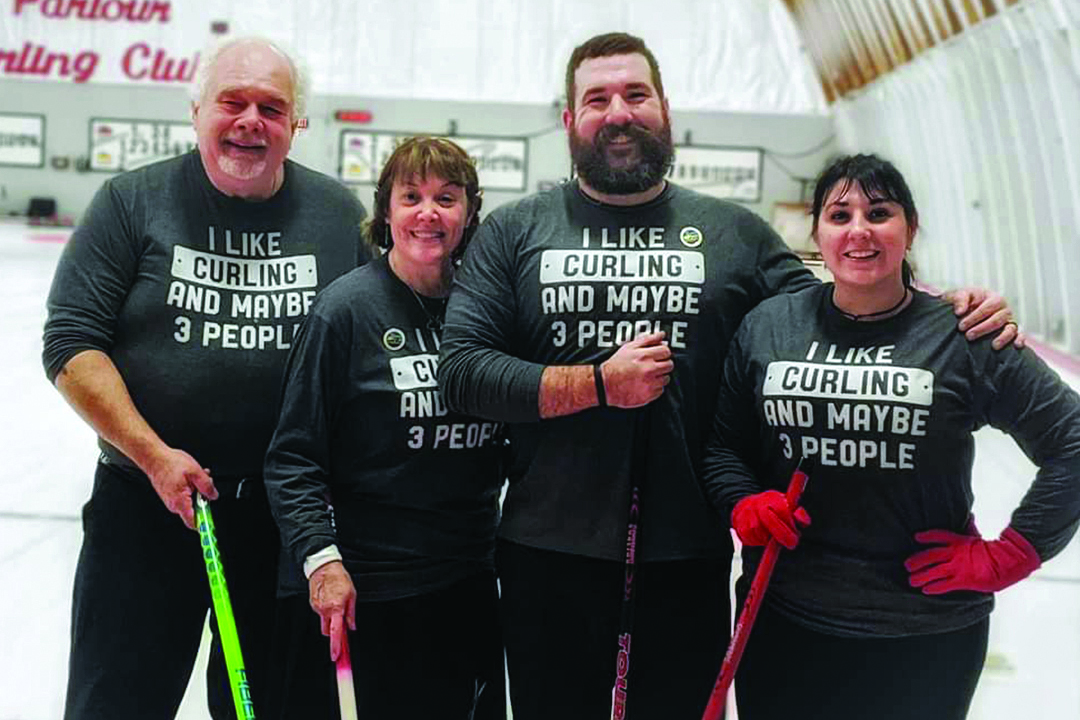
6 minute read
Cover story
Coupled curlers
Ice sport duo Ed and Mary Glowacki are relishing their successes in — and out of — the rink
Advertisement
BY ELISHA VALLADARES-CORMIER
Like many good things, Ed and Mary Glowacki’s passion for the sport of curling began over dinner. Both renowned architects, the Glowackis would attend a monthly dinner and seminar for Toledo architects. During one such gathering in 1983, Ed met an architect he recognized from a recent issue of a publication. As it turns out, this architect was featured because his team had recently won the United States Mixed Curling Championship. Not knowing much about the sport, Ed told him, “Give me a call, and I’ll give curling a shot.” The phone rang the next day.
“I just fell in love with it,” Ed said of his first time curling. He began curling in a men’s league, and Mary would often accompany and watch him compete. That Christmas, Mary was invited to participate in a tournament –called a bonspiel – during the club’s holiday party. Despite watching Ed play for months, this was her first time on the ice. And she loved it, too. “I used leg muscles I’d never used before,” she said, smiling at the memory. “I was so sore the next day I had to lift my foot to get into the car.”

For Ed and Mary Glowacki, curling has been a passion for nearly 40 years. What drives their passion for a sport that’s so often misunderstood? It’s the physical play, mental strategy and how it ties into their Catholic faith.
PHOTO BY SCOTT W GRAU/SPECIAL TO THE DIOCESE OF TOLEDO
While many people think of curling as a Canadian sport, it originated in Scotland in the 1500s as a game for the Scots to play when they couldn’t golf anymore, Ed said.
Two teams, made up of four players each, alternate sliding stones – the heavy polished rounds of granite from Ailsa Craig, Scotland –toward a circular target. Each player throws two stones for their team, and points are given for the stones closest to the center of the target. Once a thrower has released their stone, teammates guide toward the target by sweeping the ice in front of the stone.

During a curling tournament trip to Fairbanks, Alaska, team members Alana Malik, Ruth Brown, Mary Glowacki and Martha Mazzarella pose with a reindeer.
PHOTO COURTESY MARY GLOWACKI
“It’s like chess on ice,” Ed said. “It’s as much of a physical sport as it is a mental sport.” Just as chess grandmasters are precise with their moves, so are curlers with the direction the stone is thrown, the spin placed on the stone, and the sweeping of the ice as it makes its way down.
“Curling is the only sport where the object is influenced in its path of travel without being touched,” Ed added.
When the Glowackis first joined the Bowling Green Curling Club, the club played at Bowling Green State University’s ice facility. However, the ice was also used for hockey and skating, meaning that throwing stones with finesse on that ice was “like trying to make a golf putt on an asphalt stone parking lot,” Ed said. That led their curling club to build its own facility, the Black Swamp Curling Center, in 2017. Both Ed and Mary contributed their architectural gifts to bring it to life, allowing the club to have a dedicated space for members to hone their craft. Mary said the club’s membership grew from around 70 to about 200 since the new facility opened and looks to continue growing after the upcoming 2022 Winter Olympics.

Mary Glowacki and teammates Sally Augustin, Mary Glowacki, Gwen Krailo and Donna Pearson take a break from curling to enjoy a cruise of Loch Ness. They were among twenty curlers selected to participate in the curling tour of Scotland. The tour, which takes place every ten years, was a longtime goal of Mary's. She made the 2016 team.
PHOTO COURTESY MARY GLOWACKI
Many people have misconceptions of curling, such as curling is too easy, or boring, or not even a sport, the Glowackis said.
“Some people say to watch curling is like watching somebody get a haircut,” Mary said. “For someone who doesn’t understand curling, it’s probably boring or frustrating for them because they don’t know why we’re doing what we do.” It’s for this reason that their club ceased all league play in October to host a series of “Learn to Curl” evenings so that anyone could get a taste of the ancient sport’s essence: the physical exertion, mental calculation, and fraternal camaraderie this “gentleman’s game” is known for.
In fact, Ed and Mary said their lifetime of Catholicism is another reason they’re drawn to curling. Being parishioners at Our Lady, Queen of the Most Holy Rosary Cathedral most of their married life, they’ve also incorporated their faith with their profession by working on church renovations at St. Anne Parish in Fremont and St. Michael Parish in Hicksville, as well as serving on the diocese’s Liturgical Art and Architecture Commission. The Catholic values they grew up with made their passion for curling a natural progression, they said. “What drew us to curling was the camaraderie, that it’s a non trash talking sport,” Ed said. “If you consider yourself a good Catholic, the two mesh in terms of being a good person in sport.”
Curling allows them to witness their faith for others, they said. The Glowackis have curled all over the United States, Canada and Scotland, and they’ve never missed Sunday Mass. Mary is known among her fellow curlers as the Mass coordinator because she’ll have a list of different Mass times that fit into their tournament schedule.

Ed and Mary Glowacki with fellow parishioners and curlers from Rosary Cathedral David and Laura Fisk during a curling trip to Sun Parlour in Leamington, Ontario.
PHOTO COURTESY MARY GLOWACKI
It’s also allowed the Glowackis to experience growth of their own. A teammate of Ed’s had terminal cancer, and when Ed visited him, the teammate shared how the Eucharist brought tears to his eyes at Mass. “Don’t you get it? God, the almighty Father, the one in the Bible we’ve been studying about all these years, is coming to me this day,” he said to Ed. Now, when Ed returns to the pew after receiving the Eucharist, his fellow curler’s words run through his mind.
The sport has allowed them a lifetime of building authentic relationships with curlers around the world. In 2011, a Scottish team on tour in the U.S. stopped at the Glowackis’ home for dinner. In 2016, the Scots returned the favor when Mary, who has previously been selected as one of the top 20 U.S. women curlers, was on the U.S. team touring Scotland. “When you start curling, it’s like you’ve joined this international fraternity,” Mary said. “It’s all about the friendships you make.”
“The people at our curling club are from all walks of life because it’s not a country club,” Ed said. “You could be with a captain of industry or a street sweeper, young or old. But it really doesn’t matter because you’re a part of a team.”










